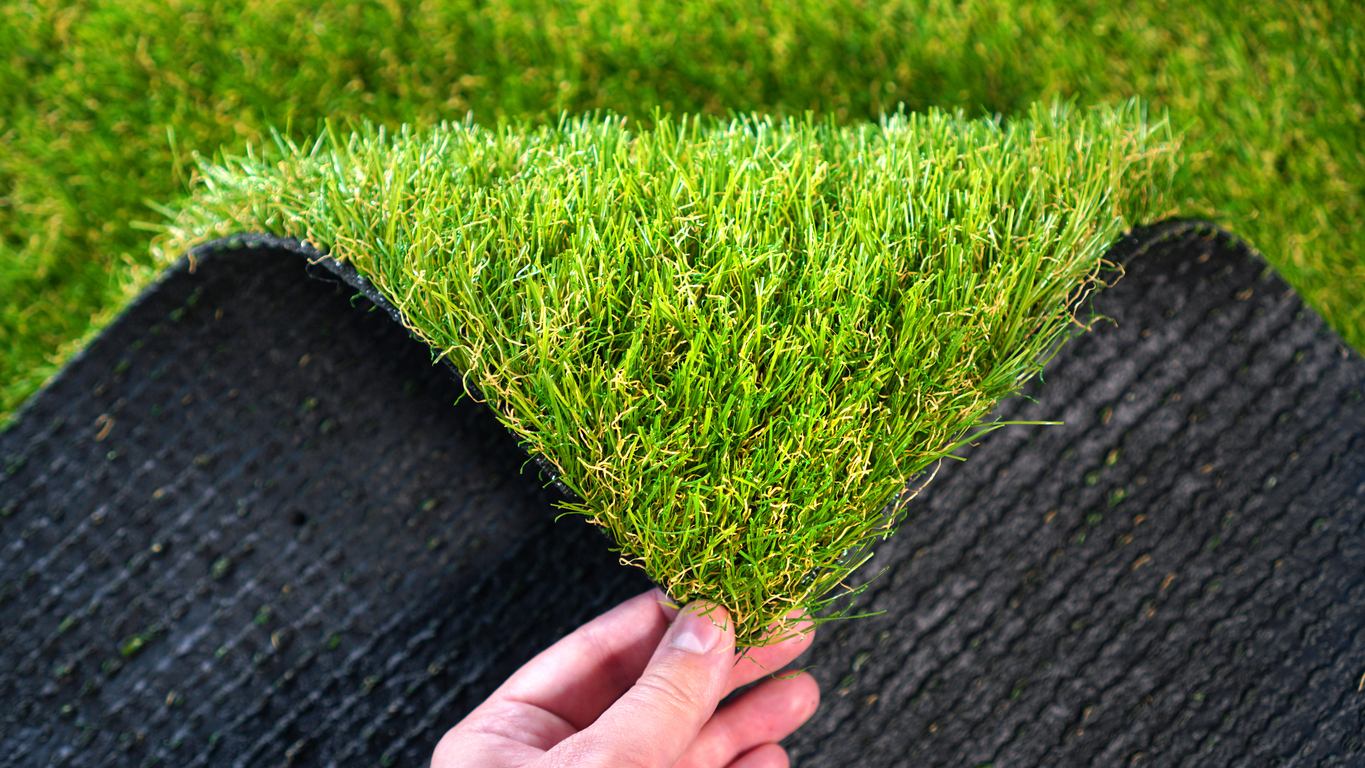5 Things to Know Before Installing Artificial Grass
August 2, 2022

There’s nothing quite like a nice, green, manicured lawn. It’s a staple for homeowners and businesses alike. The only downside is the effort it takes to keep it in great condition. Watering, mowing, aerating, overseeding, weed maintenance, fertilization – it all adds up in time and money. Hence the creation of artificial grass. Its intent was to achieve the upside of grass, without all the ongoing effort. But what should you be considering before installing artificial grass? We at Staker Parson have some ideas.
- Safety Considerations
Once upon a time, artificial grass was manufactured with materials that wouldn’t have been considered safe. Materials such as lead were once used, but those days have long since passed. Now, you’re likely to see most grass products made of synthetic fibers that are nylon, polypropylene, or polyethylene-based. These are elements that you’d find in any safe household plastic container, which means that you can be worry-free.
- Quality and Feel
Like most things naturally produced, artificial grass isn’t going to fool anyone up close. You can’t replicate the real thing entirely, but it has come a long way in quality and feel. Not only does it resemble a more natural product, if you add a quality backing, but it can also be quite comfortable to walk and play on. Plus, to most passing by, they’d never be able to tell that you’ve got a synthetic lawn. Just know that in hot environments, artificial grass does absorb heat, so it won’t be as cool to the touch as the natural option.
- Maintenance Requirements
Obviously, you won’t need to water, mow or weed your artificial grass, but it’s not entirely maintenance-free. Because it’s artificial, staining is possible, and removing stains takes work and should be dealt with immediately. You’ll also need to make sure that you rake the blades on a regular basis so that they don’t become matted down with normal wear. Leaves and other natural deposits will need to be addressed right away as well. As they break down, it’ll prove to be much more challenging to remove them over time.
- Up-Front & Long-Term Costs
This is where you’ll need to consider your top priorities. Artificial grass is far more expensive when considering up-front costs. On average, artificial grass costs about $12.50 per foot to install, whereas natural sod runs about $0.40 per foot. That’s a significant difference. The savings comes in when you consider long-term expenses. Savings on water and ongoing maintenance (lawn service, fertilizer, etc.) means that by year seven, you’ll likely have offset the costs of putting in artificial grass. With most artificial products lasting upward of 15 to 20 years, depending on use, you’re going to see a good deal of cost savings over the long term.
- Environmental Friendliness
Although you’d think of natural grass as being more environmentally friendly than an artificial option, you might be surprised. With water consumption and the chemical treatments that are often required to keep a natural lawn in pristine condition, it can make artificial grass more sustainable long term. Add to that a growing number of sustainable infill materials (the product that fills in the gaps in artificial grass), like cork and coconut fiber, and it can be very friendly to the environment.
Natural grass is always going to be a great option as a landscape covering. But, if water consumption and ongoing maintenance would keep you from leaning in that direction, then maybe artificial grass is a logical choice. Staker Parson has spent years installing both, so if you have questions or would like an expert opinion to address your specific circumstances, then we’d be happy to help. Give us a call today and we can get you sorted with a product that’s best for you.